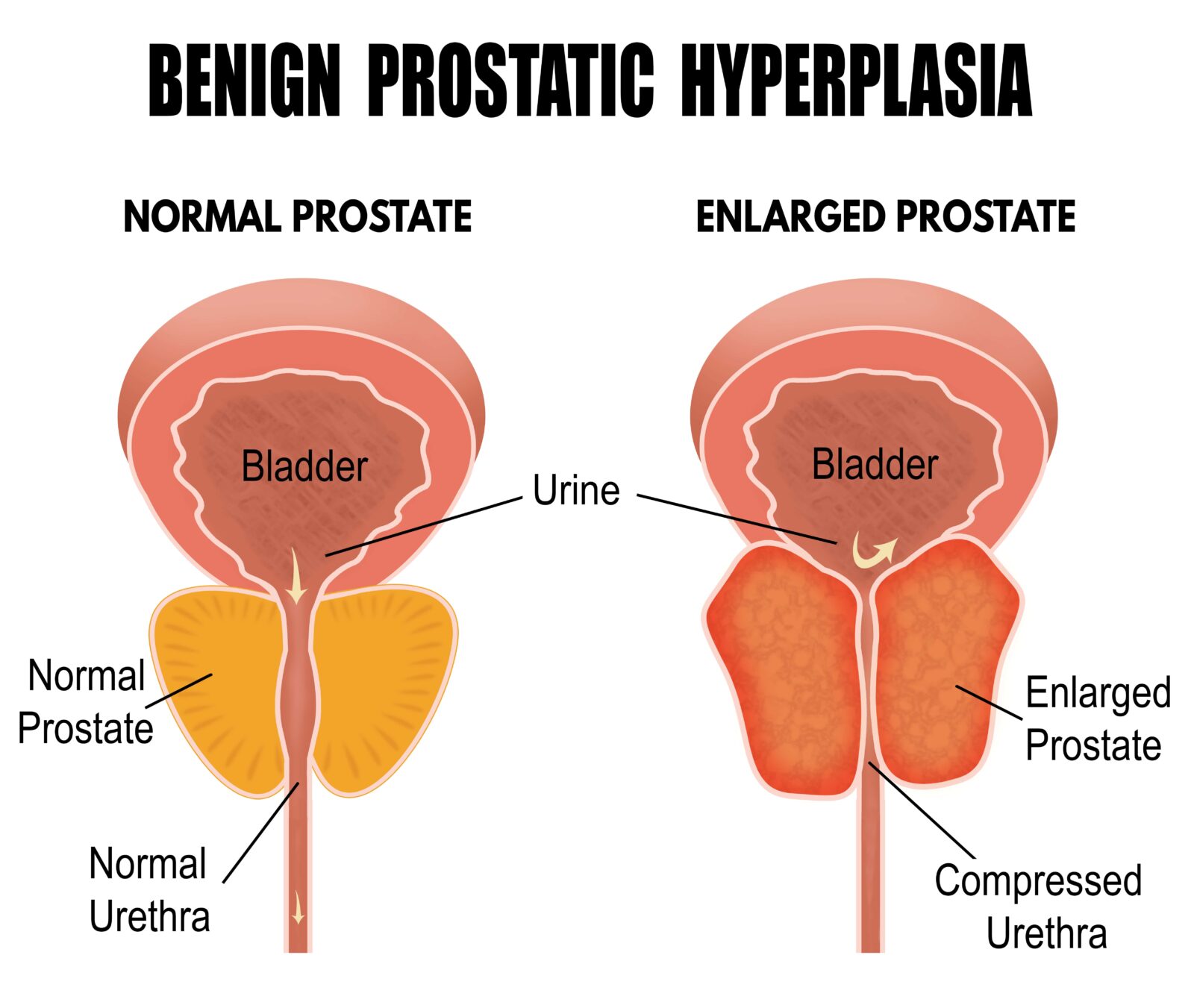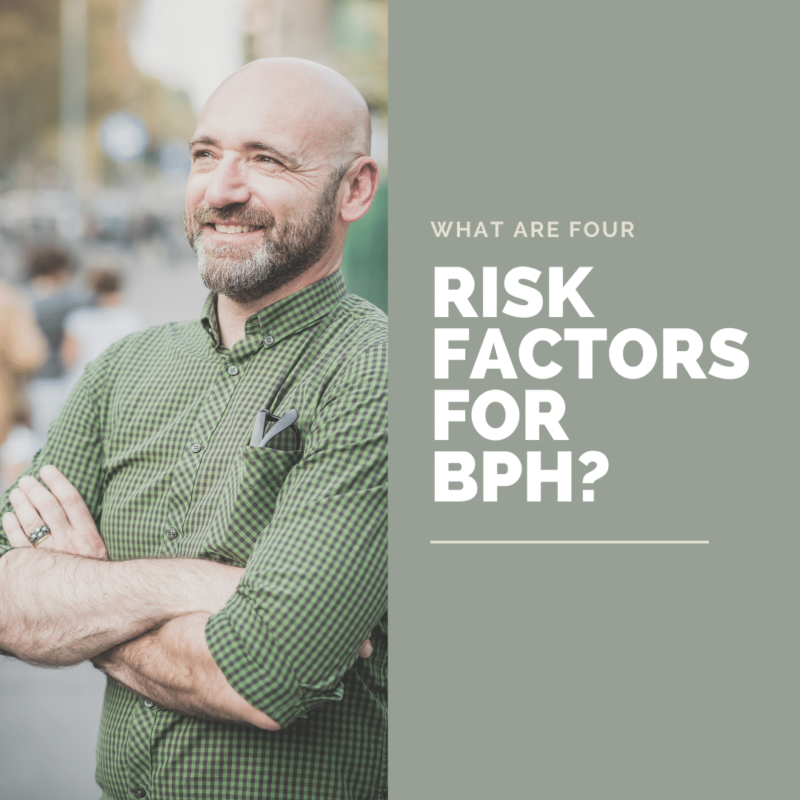If you are a middle-aged man, there’s a good chance you will experience benign prostatic hyperplasia (BPH) at some point in your life. In fact, according to the National Institute of Diabetes and Digestive and Kidney Diseases (NIDDK), more than half of all men over the age of 60 have BPH. This condition affects the prostate gland, which is located below the bladder. The prostate begins to grow larger as a man ages, which can cause problems such as difficulty urinating and a frequent need to go to the bathroom. In this blog post, we will discuss the basics of BPH, as well as four of the most common risk factors for BPH.
What is Benign Prostatic Hyperplasia (BPH)?

The prostate is a small, walnut-sized gland that is located below the bladder. The primary function of the prostate is to produce semen. The prostate also helps to control urine flow by surrounding the urethra (the tube through which urine passes).
As men age, the cells of the prostate begin to grow larger. In fact, the prostate undergoes two main growth periods as men age. The first is during puberty when the prostate gland doubles in size. The second begins around the age of 25 and continues for the rest of the man’s life.
This can cause the gland to press against the urethra and block urine flow. BPH is not cancerous, but it can cause urinary problems such as difficulty urinating, a weak stream, dribbling, and a frequent need to go to the bathroom (especially at night).
BPH can also lead to bladder or kidney damage if it is left untreated. Therefore, it is important to be aware of the risk factors for BPH and to talk to your doctor if you are experiencing any urinary symptoms.
What are the Risk Factors for BPH?
There are several risk factors for BPH, including age, family history, inactivity, and certain medical conditions.
Age:
As mentioned earlier, the risk of BPH increases with age and age is probably one of the greatest risk factors. This is simply because the prostate will continue to grow with age. In fact, the NIDDK reports that BPH is rare in men under the age of 40, but more than 50 percent of men over the age of 60 and 90 percent of men over the age of 80 have BPH.
Family History:
If your father or brother has BPH, you are more likely to develop the condition. In fact, studies on BPH have shown that there may be a genetic component in the development of BPH.

Inactivity:
Men who are inactive are also at an increased risk for BPH. This is because inactivity often leads to weight gain and obesity, both of which can contribute to the development of BPH symptoms. Exercise and weight loss can help to reduce the size of the prostate and reduce symptoms.
Certain Medical Conditions:
There are also certain medical conditions that increase the risk of BPH, including diabetes, obesity, and heart disease. This is because the high insulin levels associated with diabetes can trigger prostate growth. Obesity also causes the body to produce more estrogen, which can also trigger prostate growth. Finally, the risk factors of heart disease are similar to those of BPH. If you have any of these conditions, it is important to talk to your doctor about your risk for BPH.
Conclusion
In this blog post, we have discussed the basics of BPH, as well as four of the most common risk factors for this condition. Benign Prostatic Hyperplasia (BPH) is a common condition that affects the prostate gland. The risk of BPH increases with age, family history, inactivity, and certain medical conditions. If you are experiencing any urinary symptoms, it is important to talk to your doctor.





